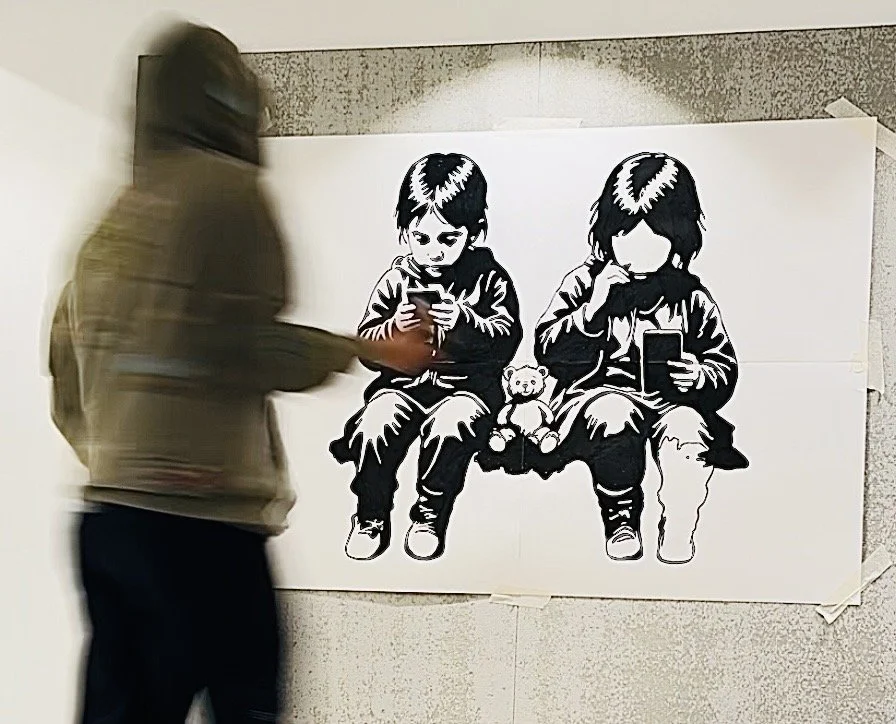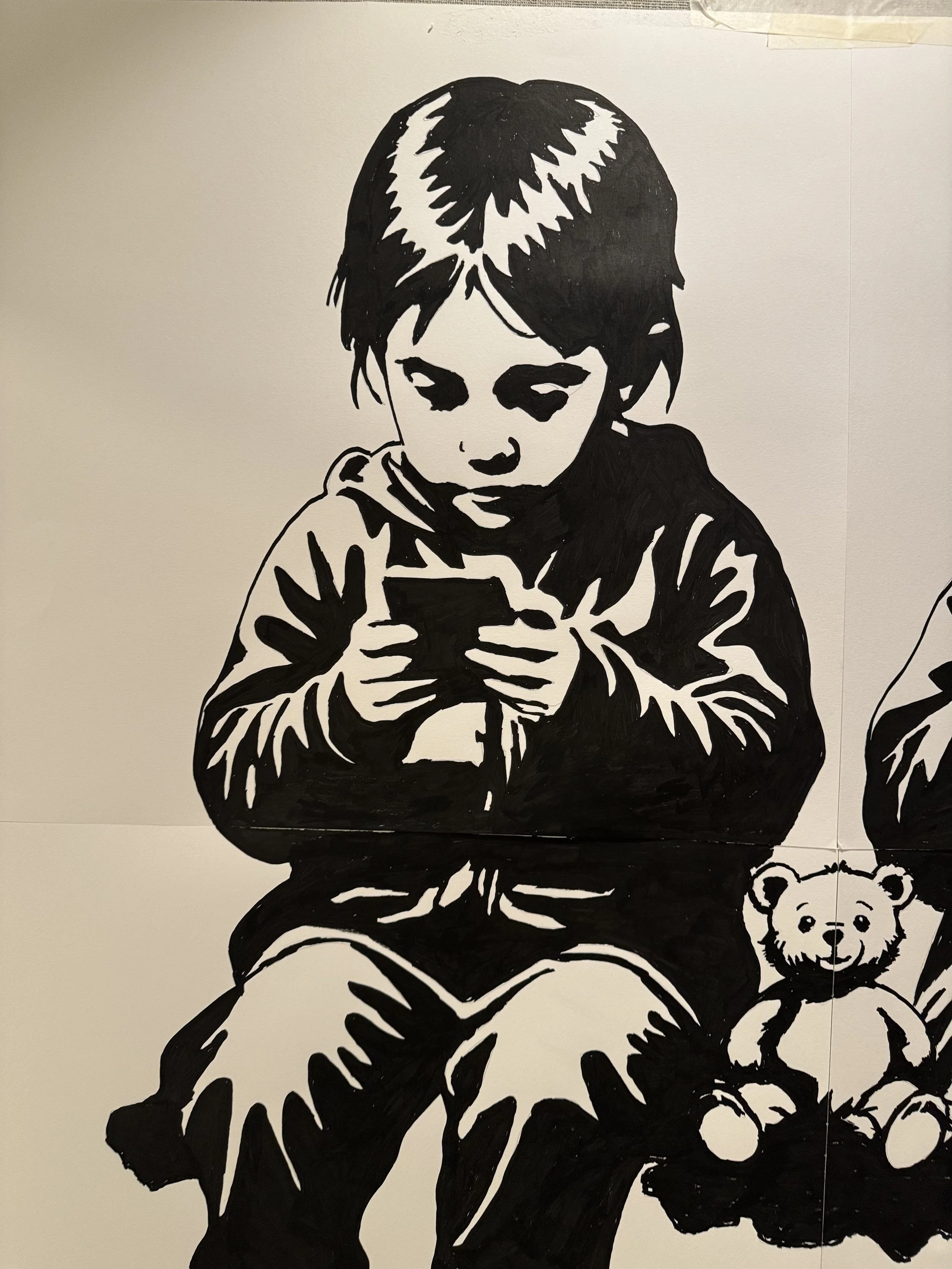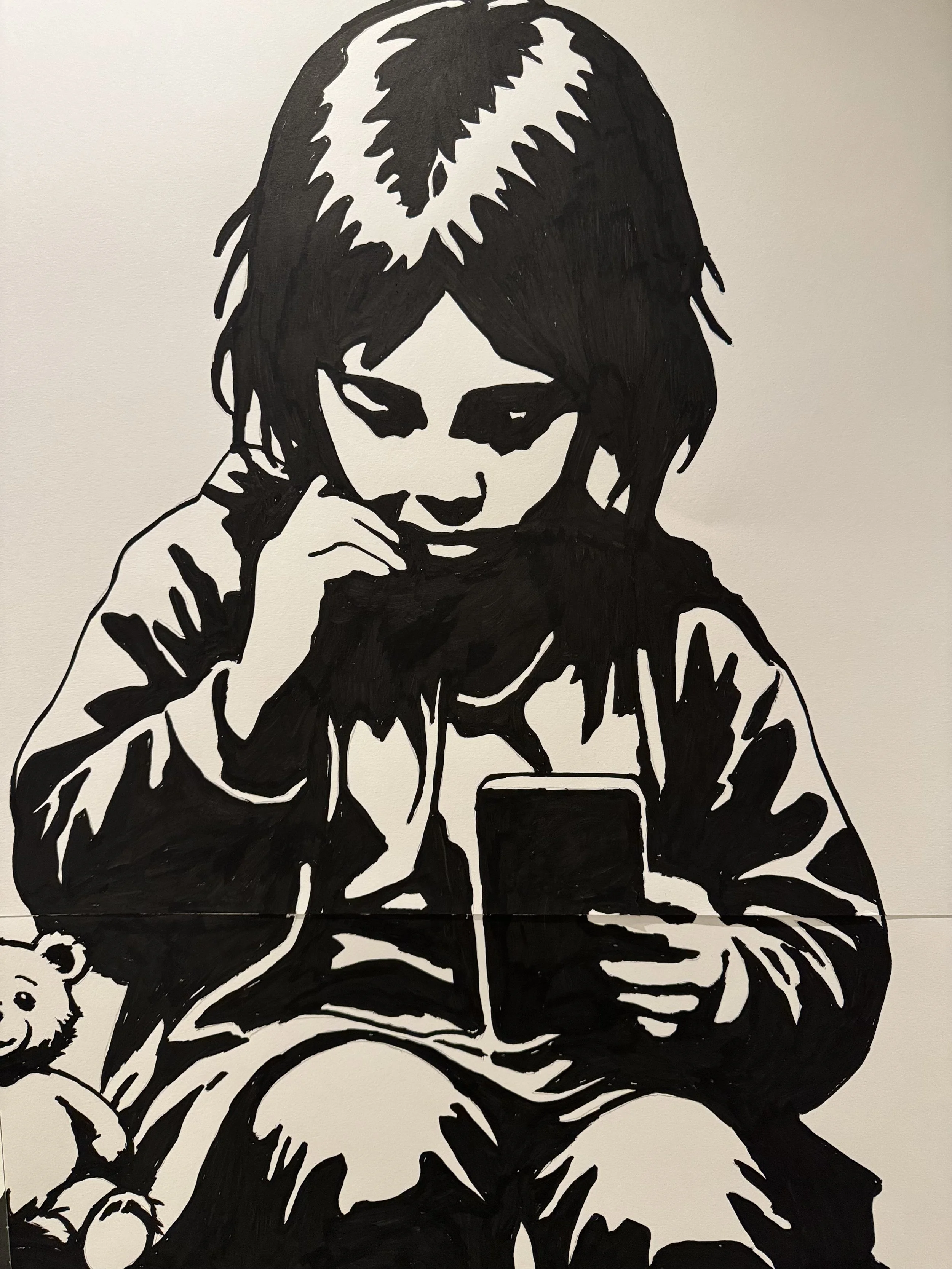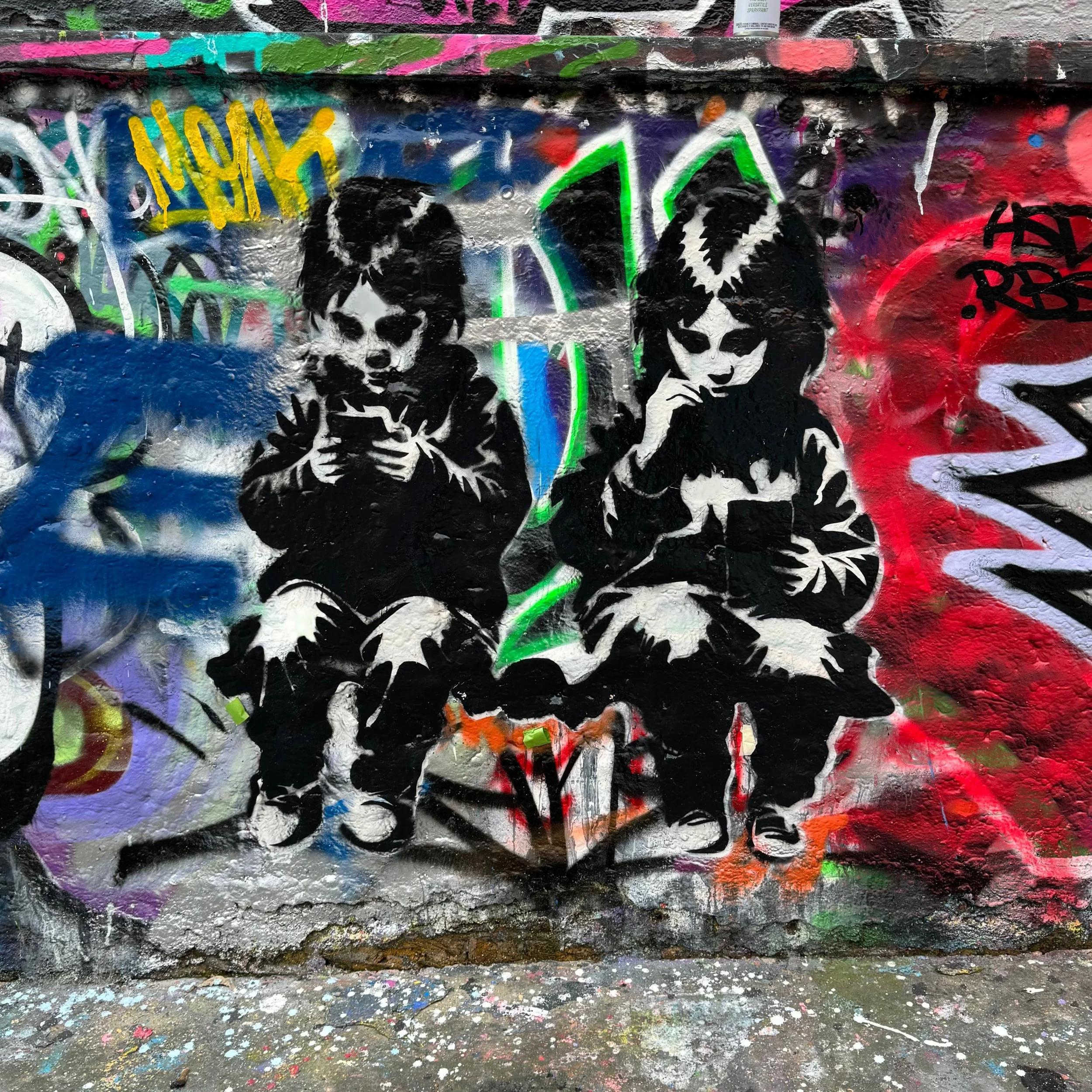Preparatory study for ‘swing of silence’
Drawing and stencil experiment, acrylic based ink, cut-out on paper and spray paint on wall
Executed 24 May 2024
This preparatory study occupies a central place in understanding Miguel Fernández’s artistic evolution, not as a finished artwork but as a vital moment of experimentation. It was here, through the act of drawing, cutting, and testing a stencil, that Fernández shaped the conceptual and formal foundations of Swing of Silence, a work later exhibited in Santander in an ongoing year-long exhibition.
The composition presents two children seated side by side, each absorbed by a handheld device. Their heads tilt downward, eyes transfixed by the glow of their screens, their small bodies isolated despite their physical proximity. Between them sits a teddy bear, untouched and forgotten, its vacant expression amplifying the poignancy of the scene. The bear functions as both witness and casualty: a symbol of traditional play abandoned in favour of digital distraction.
What sets this study apart within Fernández’s process is its very construction. The image was created not on a single sheet, but across four pieces of paper pieced together to form a fragile, makeshift whole. The children and teddy bear exist within this delicate assemblage, their forms literally held together by seams and joins that risk rupture. Allegorically, this choice resonates profoundly with the subject itself: the paper becomes a metaphor for childhood fractured by technology, the figures “broken apart” and precariously bound, just as imagination, creativity, and presence are pieced together only tenuously in a world absorbed by screens. The fragility of the surface becomes a mirror to the fragility of their condition.
Visually, the work reveals Fernández’s move from smaller sketches into the bold, graphic language that would define his style. Thick black lines carve out the silhouettes, shadows anchor the figures with weight, and every contour has been pared down to essentials. By reducing detail and eliminating background, Fernández magnifies the emotional void of the scene. The stark contrast of black and white underscores the children’s isolation, foreshadowing the silence suggested by the later title.
This experiment was not only about technical form but also about medium. After finalising the drawing, Fernández cut it into a stencil and tested it on a wall, marking a continuation of his engagement with street art. This act of translation, from studio sketch to public wall, was itself transformative. It allowed him to experience first-hand the immediacy of street practice, where passersby encountered the work unexpectedly. Observing their reactions confirmed the resonance of his imagery: even in its raw, trial state, the piece provoked reflection and conversation about the consequences of childhood immersion in technology.
For Fernández, a former school teacher, the theme carried personal weight. He had witnessed the decline of imaginative play among his students, toys left untouched as screens claimed their attention. The absence of play, he argues, is inseparable from the decline of creativity, empathy and mental wellbeing. This preparatory work crystallises that observation into a symbolic tableau: two children together, yet utterly disconnected; a toy between them, yet utterly redundant.
Significance
Though technically an experiment, this piece must be considered an essential milestone in Fernández’s work. It represents both a methodological breakthrough, the adoption of stencilling as a medium, and a conceptual sharpening of his mission: to raise awareness of the negative impact of screens on the mental health and imagination of young generations.
It is also historically significant as the direct precursor to Swing of Silence, one of Fernández’s most admired works. Looking back, this study reads as a rehearsal of ideas and forms that would later gain maturity. Its value lies not only in its visual impact but in its role as a crucible, where observation, artistic process, and public engagement first coalesced into the unmistakable voice of an artist determined to confront the cultural silence imposed by technology.





